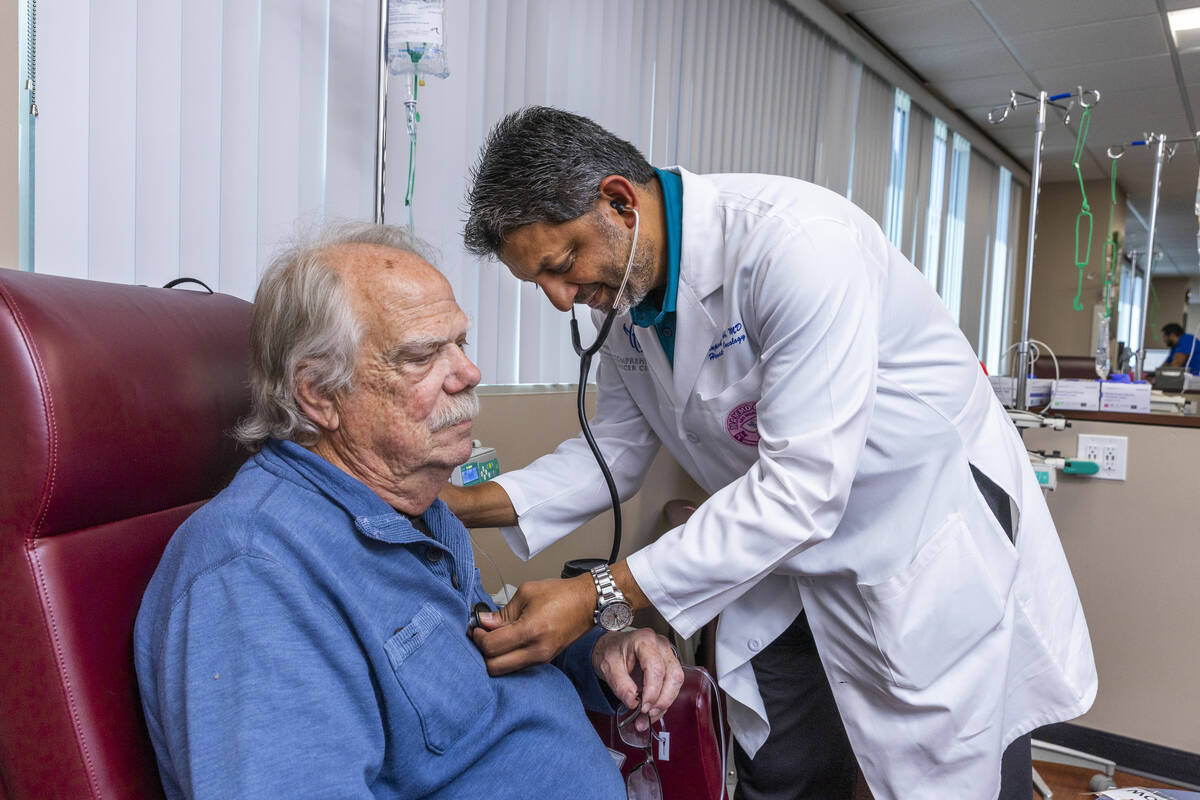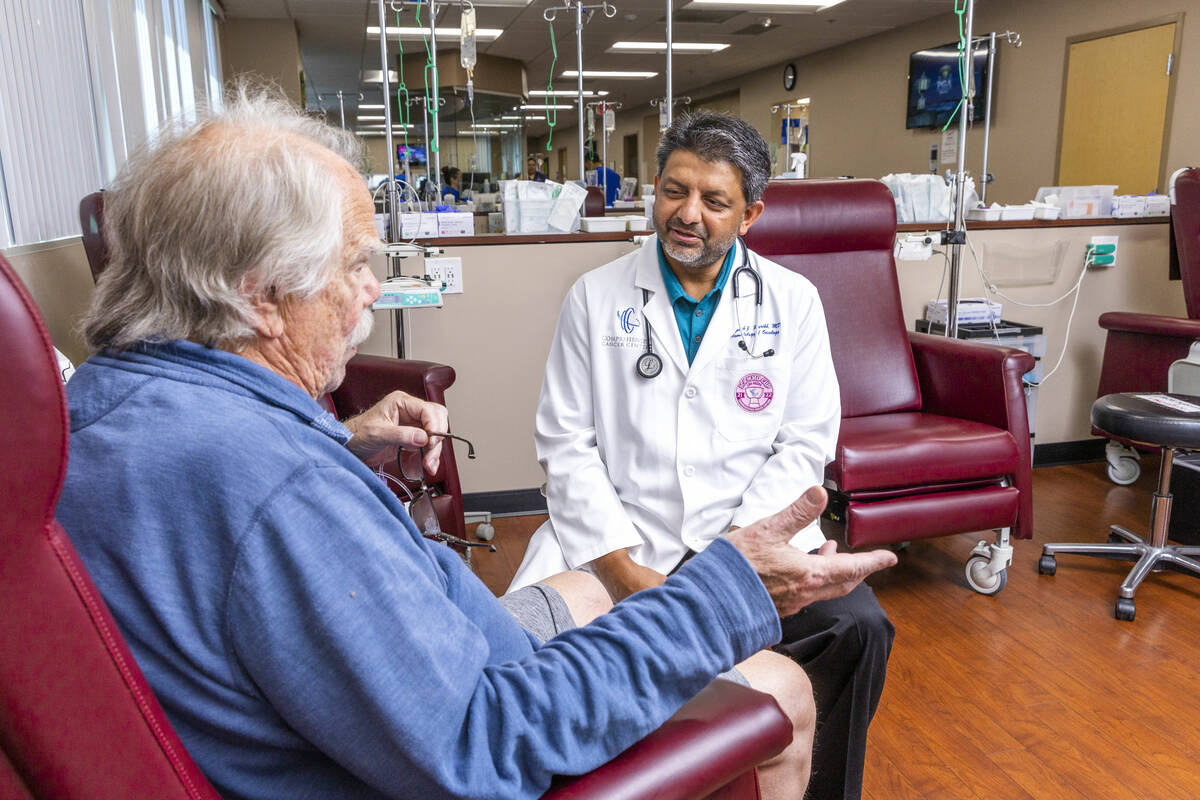‘Never did I imagine that I would have to ration chemotherapy’
Nationwide shortages of two dozen chemotherapy drugs are leading to rationing and delays in treatment for cancer patients, local and national authorities say.
“The most critical drugs that are being used to cure cancer, potentially, are just in short supply,” said Dr. Rupesh Parikh, an oncologist at Comprehensive Cancer Centers of Nevada.
There are shortages of 23 chemotherapy drugs used to treat a wide range of cancers, according to data from the University of Utah Drug Information Service. Most of these are inexpensive generic drugs used for decades that serve as “the backbone of so many chemotherapy regimens,” said associate chief pharmacy officer Erin Fox, whose team at the university tracks drug shortages.
The shortage in chemotherapy drugs is the worst it has been since 2011, she said. Overall drug shortages are the worst since 2014 for reasons that include curtailment of manufacturing and increased demand.
Parikh said the chemotherapy drug shortage, which has ramped up over the past 12 months, is now at critical mass.
“Never in my entire life did I imagine that I would have to ration chemotherapy to some of my patients, and that’s what’s happening,” he said. “It’s sometimes causing delay of care. Sometimes you have to ration these medicines to patients who need it most, which in America is unheard of.”
Some of these drugs don’t have substitutes and when they do, the substitutes may also be in short supply, he said.
Key factory shuts down
One such drug is cisplatin, which Fox said is used to treat a range of cancers, from testicular cancer to head and neck cancer to cervical cancer. Carboplatin, a substitute for cisplatin, also is in short supply.
These drugs are used as part of many chemotherapy regimens, meaning their shortage “could potentially affect a large number of people,” Fox said.
This particular shortage stems from problems with the factory in India that manufactured 50 percent of the U.S. supply of cisplatin and 20 percent of the supply of carboplatin. The plant also made 50 percent of the supply in the U.S. of methotrexate, another common cancer drug.
In November, FDA inspectors found major quality control problems at the Intas Pharmaceuticals plant that shut down production. Inspectors found plastic bags stuffed with newly shredded documents related to the potency of the drugs, among other issues, an FDA report states.
“That factory has not yet fixed things enough to restart making products,” Fox said. “We really need the other companies to ramp up their supply, but that’s not always a fast process.”
‘Miracle’ drugs affected
Some of the generic drugs in short supply are used in tandem with groundbreaking cancer therapies.
“When these really, really miracle drugs can’t be given because we can’t even give the traditional chemotherapy, that’s even more frustrating,” said Michael Ganio, senior director of pharmacy practice and quality with the American Society of Health-System Pharmacists.
Parikh said these shortages mean that doctors are faced with prioritizing drugs for patients at highest risk who could potentially be cured by them over those whose lives would only be extended, he said.
Cancer doctors are “the most innovative people in the world,” he said, and will find other ways to treat their patients, such as getting them into a clinical trial for a new drug. But the approach is less than optimal.
Said Ganio, “One of the number one predictors of outcome in a patient is getting the chemotherapy on schedule at the full dose. It’s just devastating to have to tell a patient we either have to move you to a different regimen that may have poor outcomes or it may have more side effects.”
According to Parikh, the hardest thing to tell patients is that their drugs are unavailable anywhere.
“UCLA, they don’t have the drug available,” he said. “Johns Hopkins, they don’t have the drug available. The drugs are just not available in the entire country.”
Root causes
Certain drugs, such as ADHD medications and a diabetes drug used for weight loss, are in shortage because of heightened demand for them. But with the generic cancer drugs, a key factor behind their scarcity is the thin profit margin for making them, authorities say.
“The biggest challenge here is profitability,” according to Christina Madison, an associate professor of pharmacy practice at Roseman University of Health Sciences.
“They’re older medications, which means they’re off patent and they’re generic,” she said. “And because of that, they don’t make as much money for the manufacturer” as new brand name drugs, meaning there’s less incentive to keep making them.
New drugs, which typically have patents that prohibit others from selling copies of the same drug, garner higher prices that offset the expense of animal and human studies of their safety and effectiveness.
Because of the thin profit margins for the generic drugs, “we’re not seeing the investment in facilities and equipment and processes,” which leads to issues such as contamination and loss of quality, Ganio said.
The FDA released a report in 2018 that found a lack of incentive to invest in quality as a root cause of drug shortages. A lack of transparency in regard to variations in drug quality among manufacturers has the effect of driving prices down, he said.
Shortage forecast
To address drug shortages, legislation has been introduced in Congress that would give the FDA a heads-up if a manufacturer sees six consecutive weeks of increased demand for a drug, Ganio said.
The FDA is working with manufacturers of chemotherapy drugs to expedite the release of their products. Importing drugs from manufacturers currently not selling their drugs in the U.S. is an option.
Ganio’s opinion is that the chemotherapy drug shortage won’t quickly be resolved.
“I would say this is not going to improve for a couple months at least,” he said. “And I hate saying that.”
Contact Mary Hynes at mhynes@reviewjournal.com or 702-383-0336. Follow @MaryHynes1 on Twitter.



























